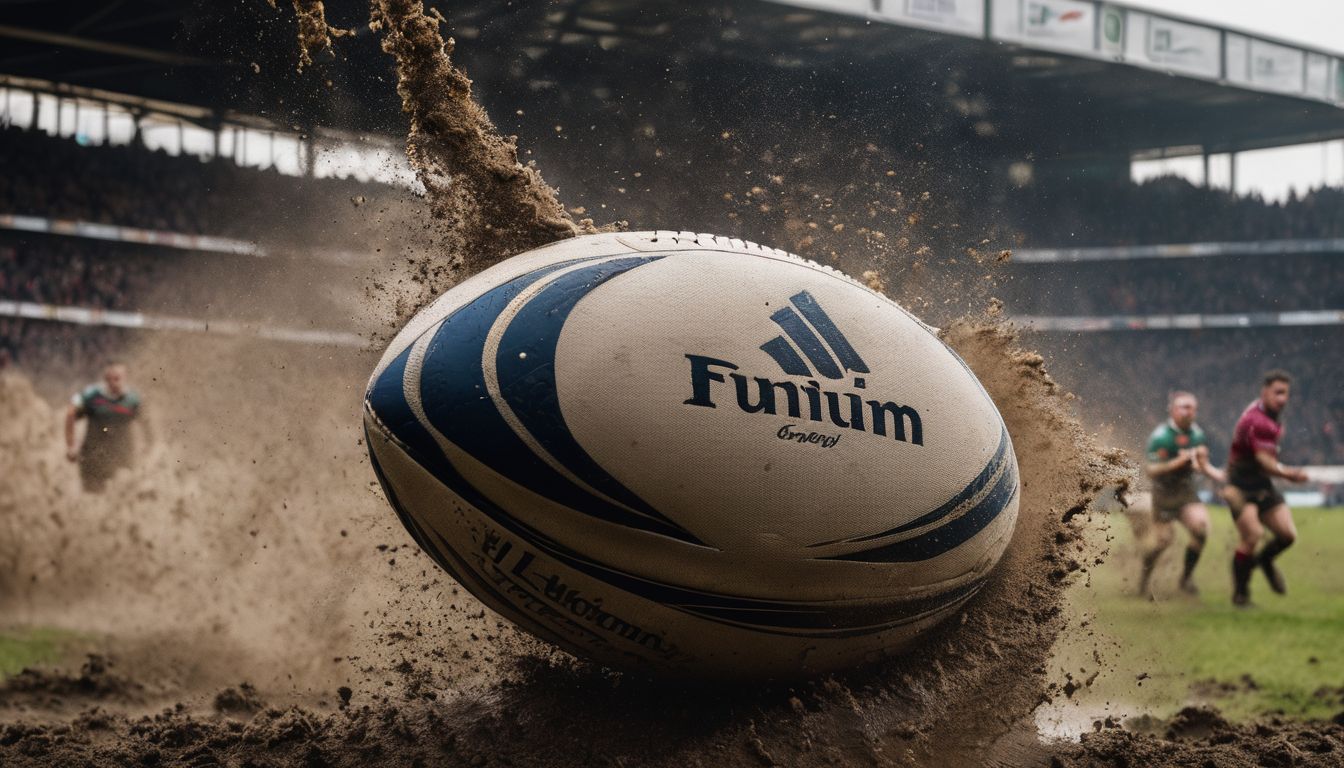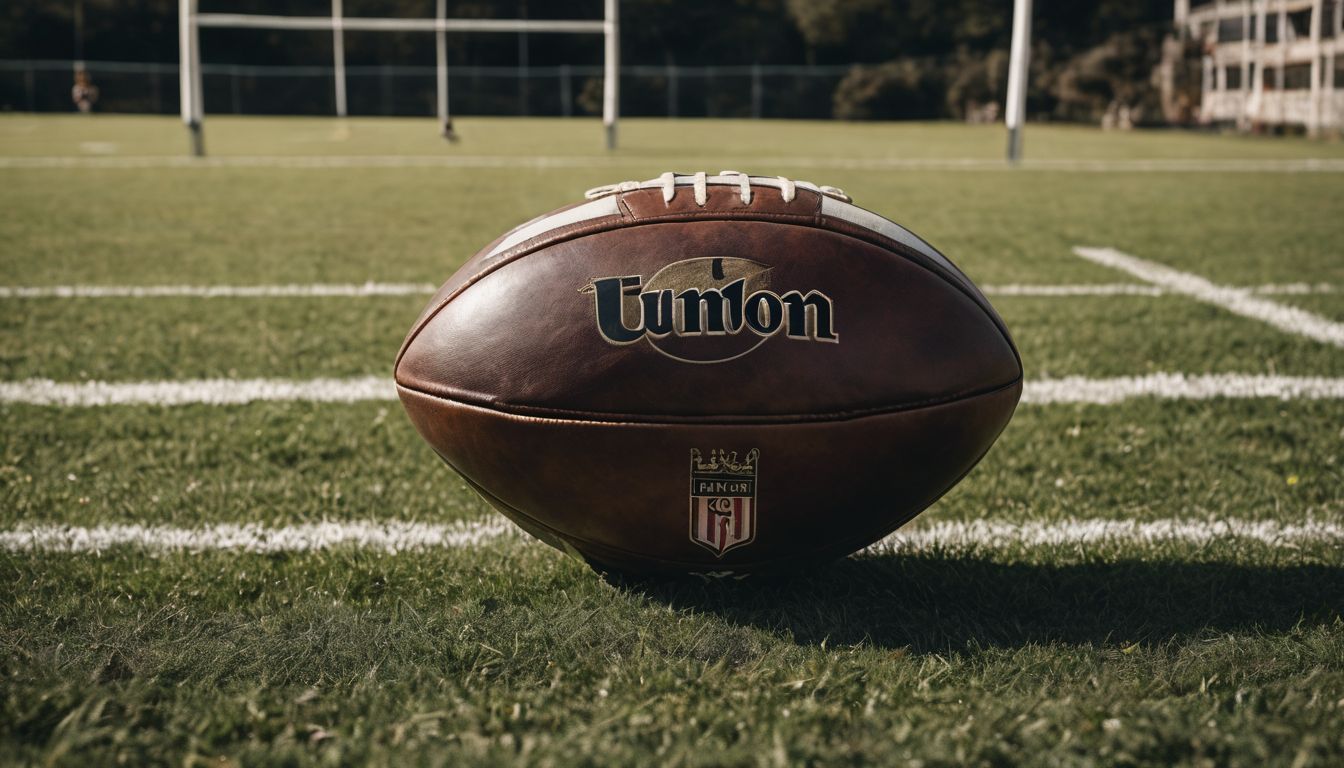Ever found yourself shouting at the TV, confused by a referee’s call during a rugby match? A common head-scratcher is the knock-on, where even seasoned fans can miss the split-second action.
This post will unravel the mystery of what a knock-on is in rugby and explain why it could change the game’s tide. Get ready to become the know-it-all in your rugby crew!
Key Takeaways
- A knock – on in rugby is when a player accidentally or intentionally hits the ball forward, and it is considered an error that leads to a changeover of possession to the opposing team.
- If a player deliberately knocks the ball forward, they can be penalised, resulting in an advantage for the other team; whereas accidental knock-ons usually result in scrums where teams compete to regain control of the ball.
- Understanding whether a knock-on has occurred is essential as it impacts game strategy; for instance, Rugby Union allows play to continue if there’s an opportunity for advantage after an accidental knock-on, but Rugby League does not.
- There are significant differences between how knock – ons are treated in Rugby Union and Rugby League which affect how games are played and managed. Knowing these rules helps players avoid penalties and maintain their team’s momentum during matches.
- Handling skills and awareness of positional play are vital in preventing knock-ons. Players must practise control over the ball at all times as any forward movement from hands or arms can lead to crucial turnovers during gameplay.
Definition of a Knock-On
A knock-on occurs when a player makes contact with the ball and it goes forward in the game of Rugby. This results in a turnover of possession to the opposing team.
A player makes contact with the ball and it goes forward
A player’s contact with the ball can change the game in an instant, especially if that ball travels forward. This action often happens during a tense tackle or a risky attempt to catch and control the rugby ball.
If their hand or arm sends the ball forward and it hits either the ground or another player, referees call this a knock-on – a simple error that can shift possession and alter match dynamics.
The sport of rugby hinges on maintaining lawful play to keep the game flowing smoothly. After such incidents, teams brace for scrums which offer a fair chance to regain control over the oval-shaped cause of all commotion.
With focus turning towards regaining possession, players must ready themselves for what comes next: How does one incident lead to an entire team huddling around for a scrum?.
How a Knock-On Occurs
A knock-on occurs when a player makes contact with the ball and it goes forward, often happening during possession or attempting to tackle an opponent. Want to learn more about the consequences of a knock-on in rugby? Keep reading!
Possession of the ball
When a player has possession of the ball and it goes forward due to unintentional contact, it is considered a knock-on in rugby. The rules specify that if the ball is propelled from a player’s hand or arm and moves towards the opponent’s try line, then this constitutes a knock-on.
Whether during an attempted catch or being knocked out while in control of the ball, any forward movement results in this infringement.
In rugby, maintaining possession of the ball is crucial for advancing play and scoring points. Therefore, players must handle the ball carefully to avoid committing a knock-on offense.
Attempting to tackle an opponent
When a player is attempting to tackle an opponent, there is a risk of committing a knock-on in rugby. As the player engages in the tackle, they must be cautious not to make contact with the ball that causes it to go forward.
This action can result in a knock-on and lead to turnover possession or potentially awarding a penalty to the opposing team. It’s crucial for players involved in tackles to be aware of their movements and ensure they do not inadvertently cause the ball to go forward, which would warrant penalties or scrums against their team.
Consequences of a Knock-On
A deliberate knock-on results in a penalty, while an accidental one leads to a scrum. To learn more about the consequences of knock-ons in rugby, keep reading!
Penalty for deliberate knock-on
Deliberately knocking or throwing the ball forward can result in a penalty being awarded to the opposing team. The referee closely monitors players’ actions to ensure fair play, and deliberate knock-ons are considered infractions that can lead to penalties.
When a player intentionally knocks the ball forward, it is seen as an attempt to gain an unfair advantage and is penalised accordingly by the referee. This penalty serves as a deterrent against unsportsmanlike conduct on the field, ensuring that players adhere to the rules of the game.
Next up, “Turnover of possession”
Turnover of possession
When a knock-on occurs in rugby, it leads to a turnover of possession. The team that did not commit the knock-on gains possession of the ball through a scrum, providing an opportunity for them to capitalise on their opponent’s mistake and potentially score points.
A knock-on can significantly impact the flow of the game as it gives the opposing team an advantage and allows them to gain control of play. It is crucial for players to be mindful of this consequence and exercise caution to avoid committing a knock-on during matches, as possession turnovers can alter the course and outcome of rugby games.
Scrum for accidental knock-on
When an accidental knock-on occurs in a rugby match, the consequence is a scrum. The team that did not commit the knock-on gets possession of the ball. It is crucial for players to be mindful of their handling and catching techniques to avoid unintentional knock-ons as this could lead to a turnover in possession, ultimately influencing the outcome of the game significantly.
Referees enforce strict adherence to the rules regarding accidental knock-ons, making it essential for both players and coaches to understand and respect these regulations during gameplay.
Differences between Knock-On in Rugby Union and Rugby League
In Rugby Union, when a knock-on occurs, the opposing team is awarded a scrum with the opportunity to gain possession of the ball. However, in Rugby League, if a knock-on happens, the game is stopped and a scrum is awarded to the team that did not commit the infringement.
This fundamental difference affects gameplay strategies and tactics between both versions of rugby.
Additionally, in Rugby Union, accidental knock-ons result in advantage being played for the non-offending team. Conversely, in Rugby League, advantage isn’t applied for accidental knock-ons; instead, play stops immediately and a scrum is formed.
Understanding these nuanced differences can significantly impact how players approach possession and defense strategies within each version of rugby.
Other Related Terms in Rugby
Obstruction and deliberate knock-on are other important terms in rugby that players and fans should be familiar with. These terms relate to player actions that can result in penalties or turnovers of possession during the game.
Obstruction
When a player deliberately obstructs an opponent from playing the ball, it is considered a violation of the rules in rugby. This can occur when a player uses their body or interferes with an opponent without being in possession of the ball, impeding their ability to play.
The referee will penalise any obstructive action that prevents fair play and may award a penalty to the opposing team as a consequence.
Deliberate obstruction is strictly regulated in rugby, and players should be mindful of not interfering with opponents while not in possession of the ball. Understanding and adhering to the rules regarding obstruction are crucial for players, coaches, and referees to ensure fair and sportsmanlike conduct during matches.
Deliberate knock-on
A deliberate knock-on occurs when a player intentionally knocks or throws the ball forward, breaching the laws of the game. This action is considered an infringement and can result in a penalty being awarded to the opposing team.
In addition to potentially facing penalties, players who commit deliberate knock-ons risk causing a turnover in possession, impacting the flow and outcome of the game significantly.
Moving on from understanding what constitutes a deliberate knock-on, it’s important to explore how obstruction can impact gameplay in rugby union.
Causality-related terms
Causality-related terms in rugby refer to actions that result in a cause-and-effect relationship during gameplay. When a player makes contact with the ball and it goes forward, it creates a knock-on effect, impacting the flow of the game.
Understanding these terms is crucial for players and referees, as they influence the outcome of matches. Deliberate actions such as obstructing opponents or intentionally knocking on can lead to penalties, affecting possession and potentially altering the course of play.
These causality-related terms encompass the pivotal moments in a game where decisions are made by referees based on how certain actions have directly influenced the progression of play.
Knock-on effect
Transitioning from the discussion of causality-related terms in rugby to the concept of the knock-on effect, it’s essential to consider how a single knock-on incident can have a ripple impact on the game.
A knock-on can cause an immediate turnover in possession, shifting momentum and altering the dynamics of play. This sudden change in possession due to a knock-on can lead to scoring opportunities for the opposing team or create defensive challenges, ultimately influencing the outcome of the match.
Additionally, a series of knock-ons within a short period can disrupt team cohesion and affect overall performance.
The knock-on effect goes beyond just losing possession; it encompasses psychological and strategic aspects as well. The pressure resulting from consecutive knock-ons may impact players’ confidence and decision-making abilities, potentially leading to further errors or missed opportunities.
Conclusion
Understanding the concept of a knock-on in rugby is crucial for players, coaches, and referees. The act of knocking the ball forward during possession or attempting to tackle an opponent can result in penalties or turnovers.
Knowing when a knock-on has occurred and its consequences is essential for maintaining fair play and ensuring a competitive game. Players should strive to avoid committing knock-ons through careful handling and awareness of the rules, ultimately contributing to the overall integrity of the sport.
FAQs
1. What exactly is a knock-on in rugby?
A knock-on in rugby happens when a player accidentally hits the ball forward with their hands or arms, and it’s against the rules.
2. Can a referee call a foul for a deliberate knock-on?
Yes, if a player purposely knocks the ball forward, the referee will decide it’s a deliberate knock-on and penalise that player.
3. Why is there no such thing as a ‘forward pass’ like in knock-ons?
In rugby, you cannot throw the ball forward to another teammate; this is also known as a ‘forward pass’ which is not allowed just like accidental knock-ons.
4. Does tackling have anything to do with causing knock-ons?
Absolutely! When players tackle each other during games, sometimes they can cause their opponent to accidentally drop or push the ball forward resulting in what we know as the ‘knock-on effect’.









